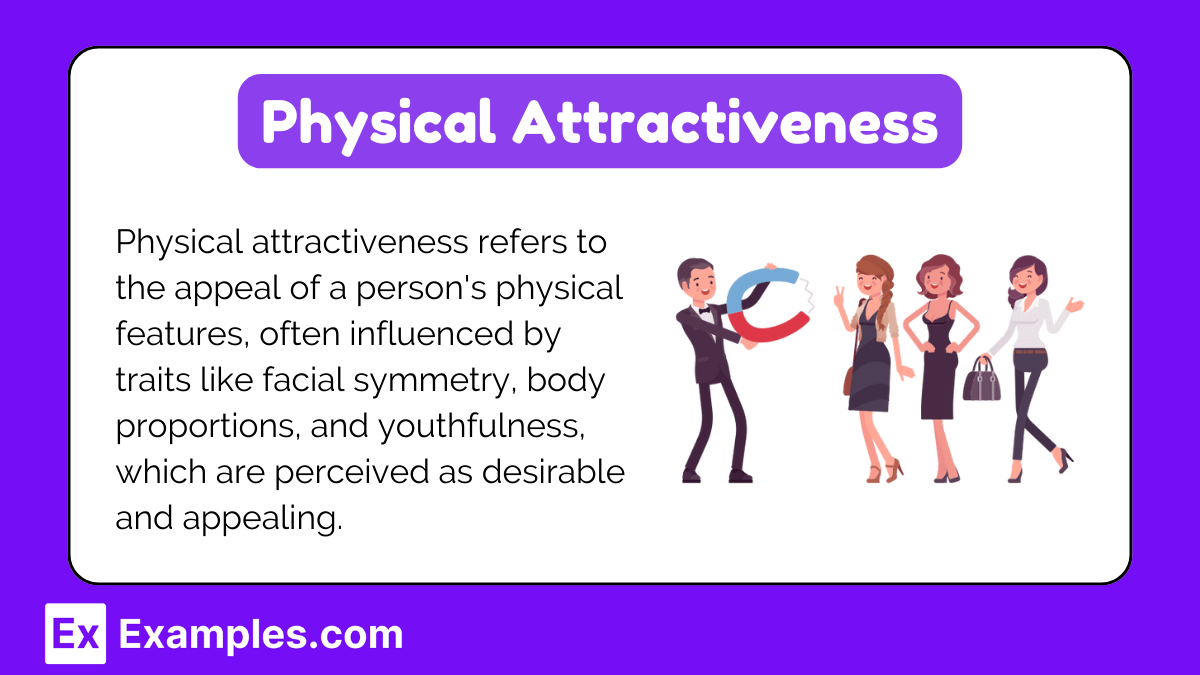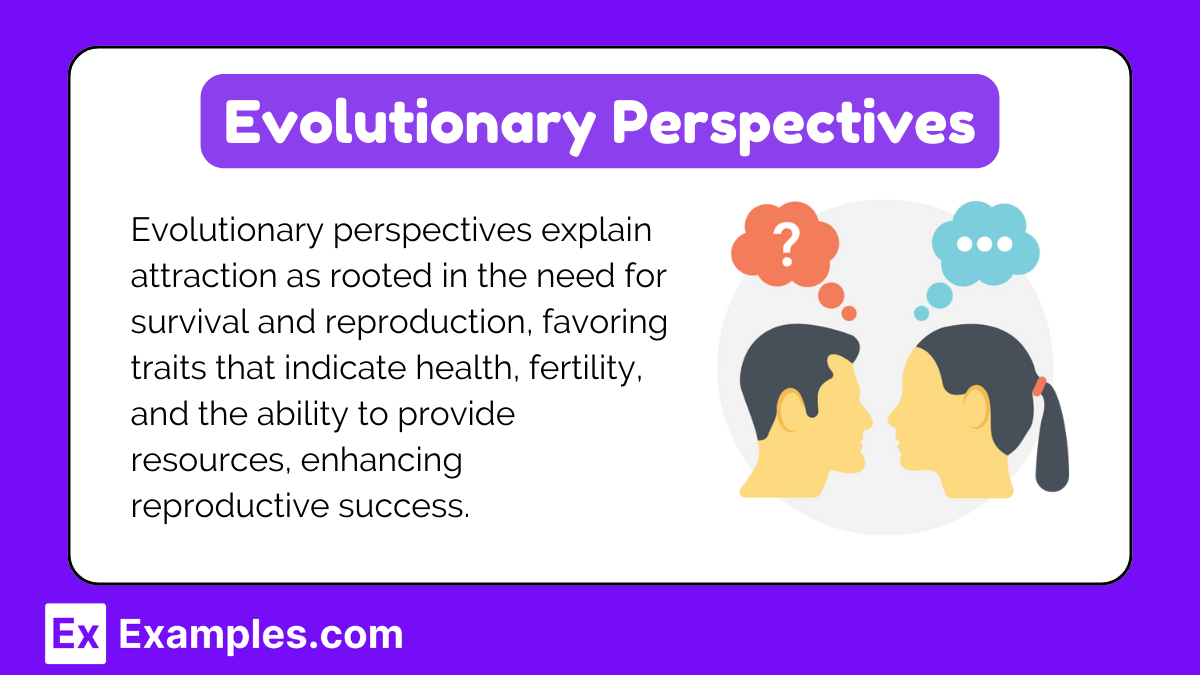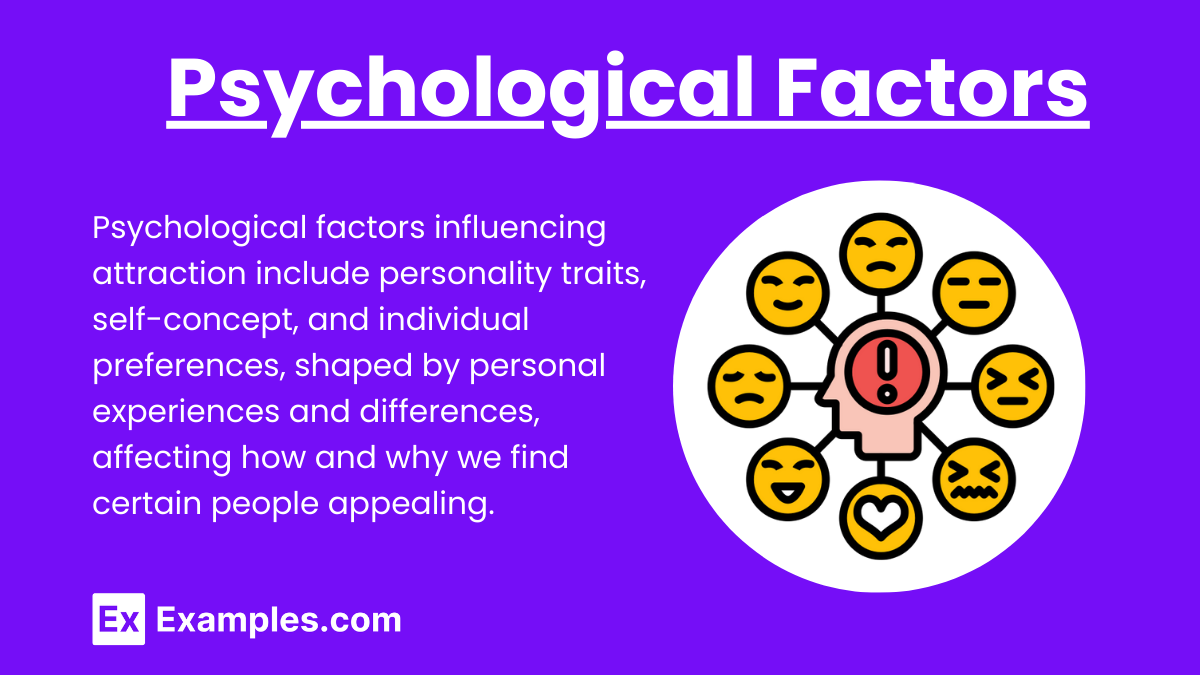In the study of human relationships, understanding the variables that contribute to attraction is crucial. For AP Psychology, these variables include physical attractiveness, proximity, similarity, reciprocity, familiarity, and social and cultural influences. Each factor plays a significant role in how we form connections and bonds with others. By exploring these elements, students can gain a deeper insight into the psychological mechanisms behind attraction and apply this knowledge to real-world situations and exam scenarios.
Learning Objectives
Learn about the key variables that contribute to attraction, including physical attractiveness, proximity, similarity, reciprocity, familiarity, and social and cultural influences. Understand how evolutionary perspectives and psychological factors like personality and self-esteem shape attraction. Be able to explain the mechanisms and effects of these variables and provide examples. Recognize how these factors interact to influence human relationships and apply this knowledge to various scenarios and questions on the exam.
Physical Attractiveness

Physical attractiveness is often the first aspect noticed in a potential partner. Research shows that individuals tend to prefer those who are physically appealing, often associating good looks with positive qualities such as health, intelligence, and sociability.
Key Factors of Physical Attractiveness
Symmetry: Symmetrical faces are often perceived as more attractive.
Proportion: Certain body proportions, such as the waist-to-hip ratio, are linked to attractiveness.
Youthfulness: Younger appearances are often associated with fertility and vitality.
Proximity
Proximity, or geographical closeness, significantly influences attraction. This principle is based on the Main Idea that people who are physically near each other have more opportunities to interact and form connections.
Factors Enhancing Proximity
Frequent Interaction: Regular contact increases familiarity and comfort.
Convenience: Close proximity reduces the effort needed to maintain a relationship.
Similarity

Similarity refers to the extent to which individuals share common interests, values, attitudes, and backgrounds. People tend to be attracted to those who are similar to themselves because it validates their own beliefs and creates a sense of understanding.
Dimensions of Similarity
Attitudes and Beliefs: Shared views on politics, religion, and life goals enhance attraction.
Interests and Hobbies: Common activities provide a basis for shared experiences.
Personality Traits: Similar temperaments and dispositions can lead to harmony in interactions.
Reciprocity

Reciprocity is the mutual exchange of feelings and attitudes. People are more likely to be attracted to those who show that they like them. The principle of reciprocity suggests that we tend to return feelings of admiration and affection.
Impact of Reciprocity
Self-Esteem Boost: Knowing someone likes us increases our self-worth.
Reduced Uncertainty: Reciprocal feelings diminish the fear of rejection.
Familiarity

Familiarity stems from repeated exposure to a person. The mere exposure effect posits that people develop a preference for things merely because they are familiar with them.
Effects of Familiarity
Increased Comfort: Repeated encounters create a sense of security.
Predictability: Familiarity makes a person's behavior more predictable, reducing anxiety.
Social and Cultural Influences

Social and cultural influences shape our perceptions and standards of attraction. Social Norms, cultural practices, and media portrayals play a significant role in determining what is considered attractive.
Examples of Social and Cultural Influences
Media Representation: Depictions of beauty standards in movies and advertisements.
Cultural Norms: Different cultures have varied criteria for attractiveness (e.g., body size preferences).
Social Status: Attributes such as wealth, education, and social standing can enhance attractiveness.
Evolutionary Perspectives

Evolutionary psychology suggests that attraction is rooted in the need for survival and reproduction. Traits that signify health, fertility, and genetic fitness are often considered attractive because they increase the chances of successful offspring.
Evolutionary Traits of Attraction
Physical Health: Clear skin, bright eyes, and other signs of health are deemed attractive.
Reproductive Potential: Youth and physical fitness indicate reproductive viability.
Resource Provision: Traits that suggest the ability to provide resources, such as strength or intelligence, are attractive.
Psychological Factors
Psychological factors such as personality traits, self-esteem, and individual preferences also influence attraction. Personal experiences and individual differences shape what we find appealing.
Examples of Psychological Factors
Personality: Traits like kindness, humor, and confidence can be highly attractive.
Self-Esteem: People with a strong self-concept are more likely to seek out and maintain attractive partners.
Attachment Styles: Secure attachment in childhood can lead to healthier adult relationships.




